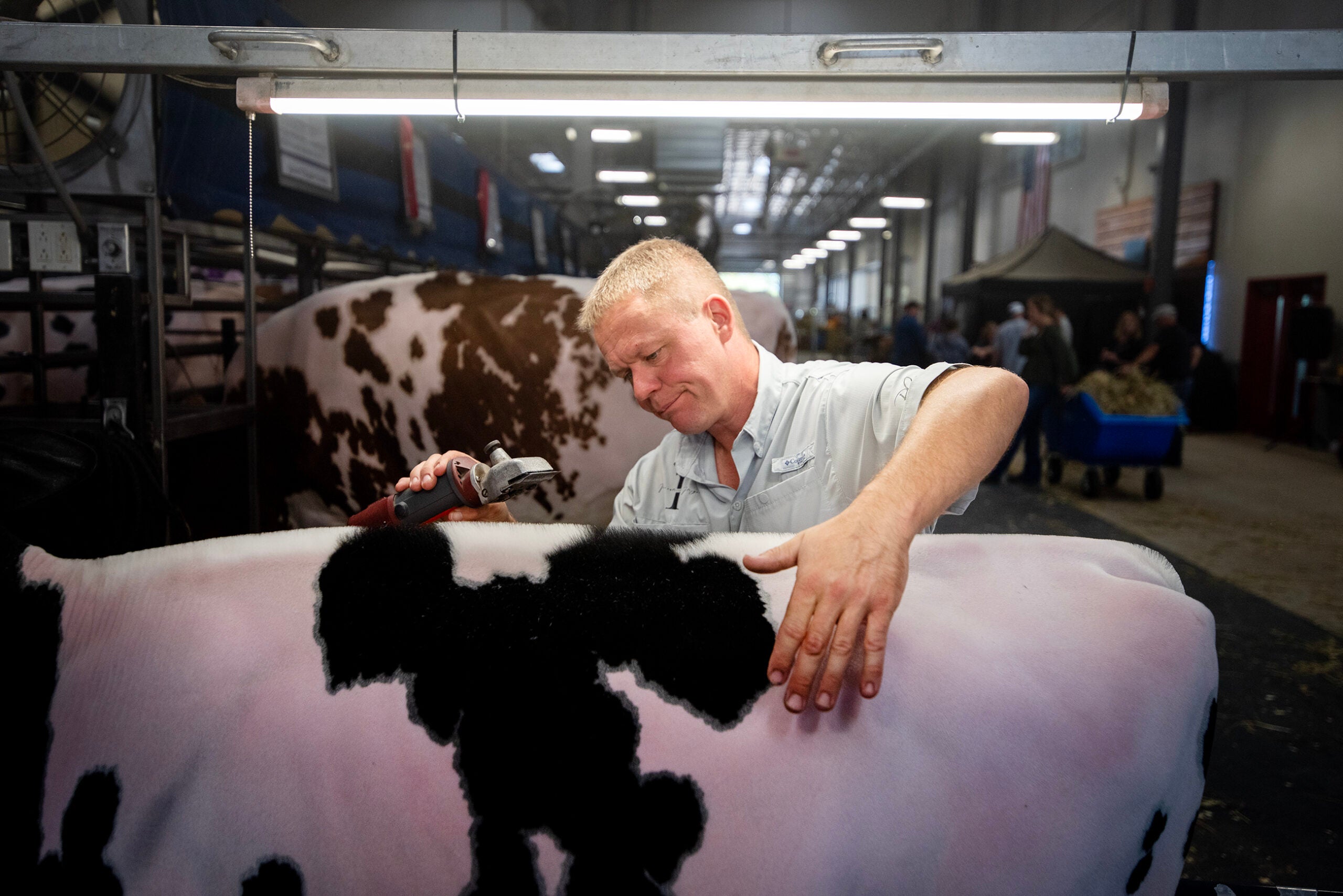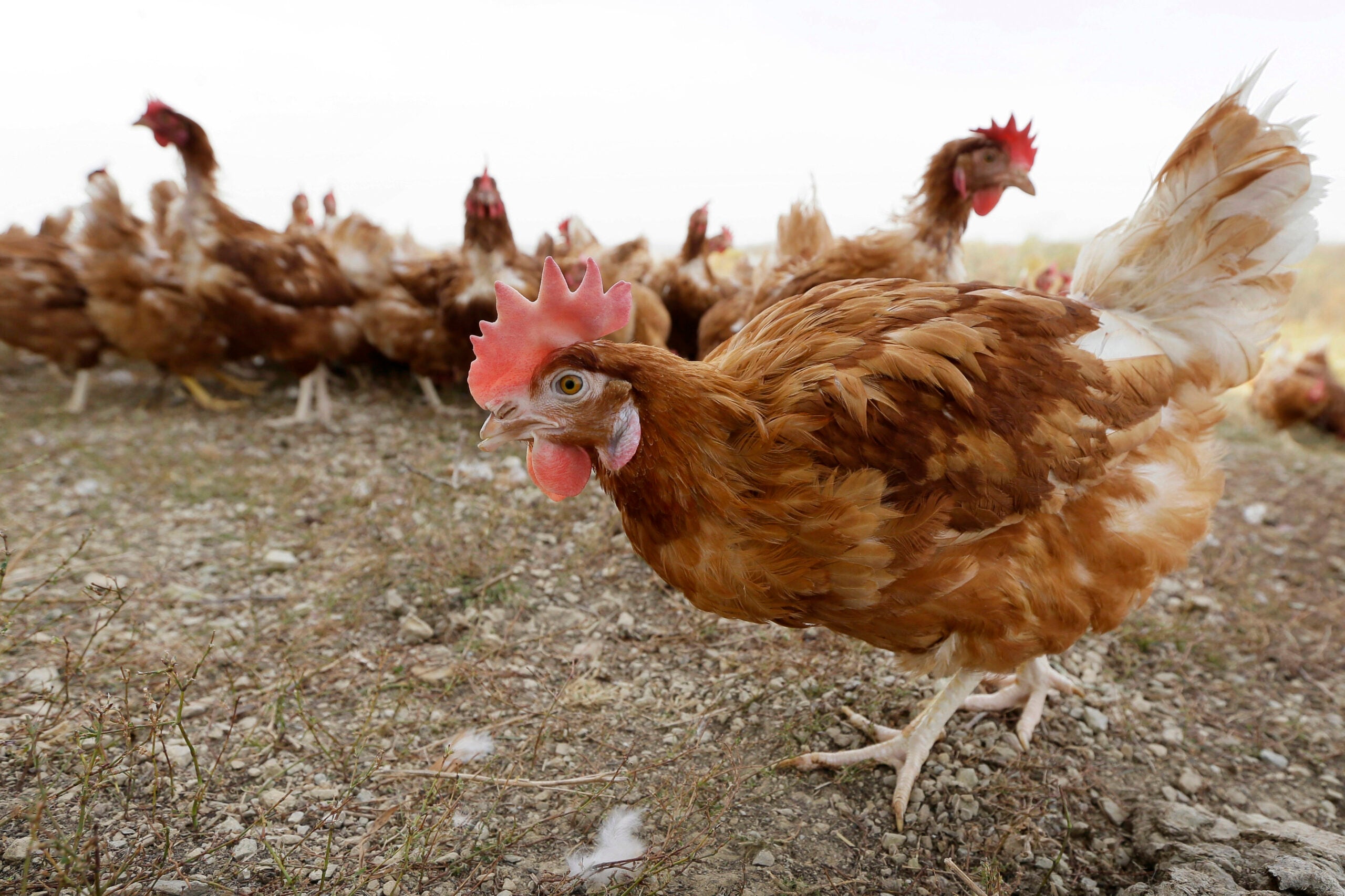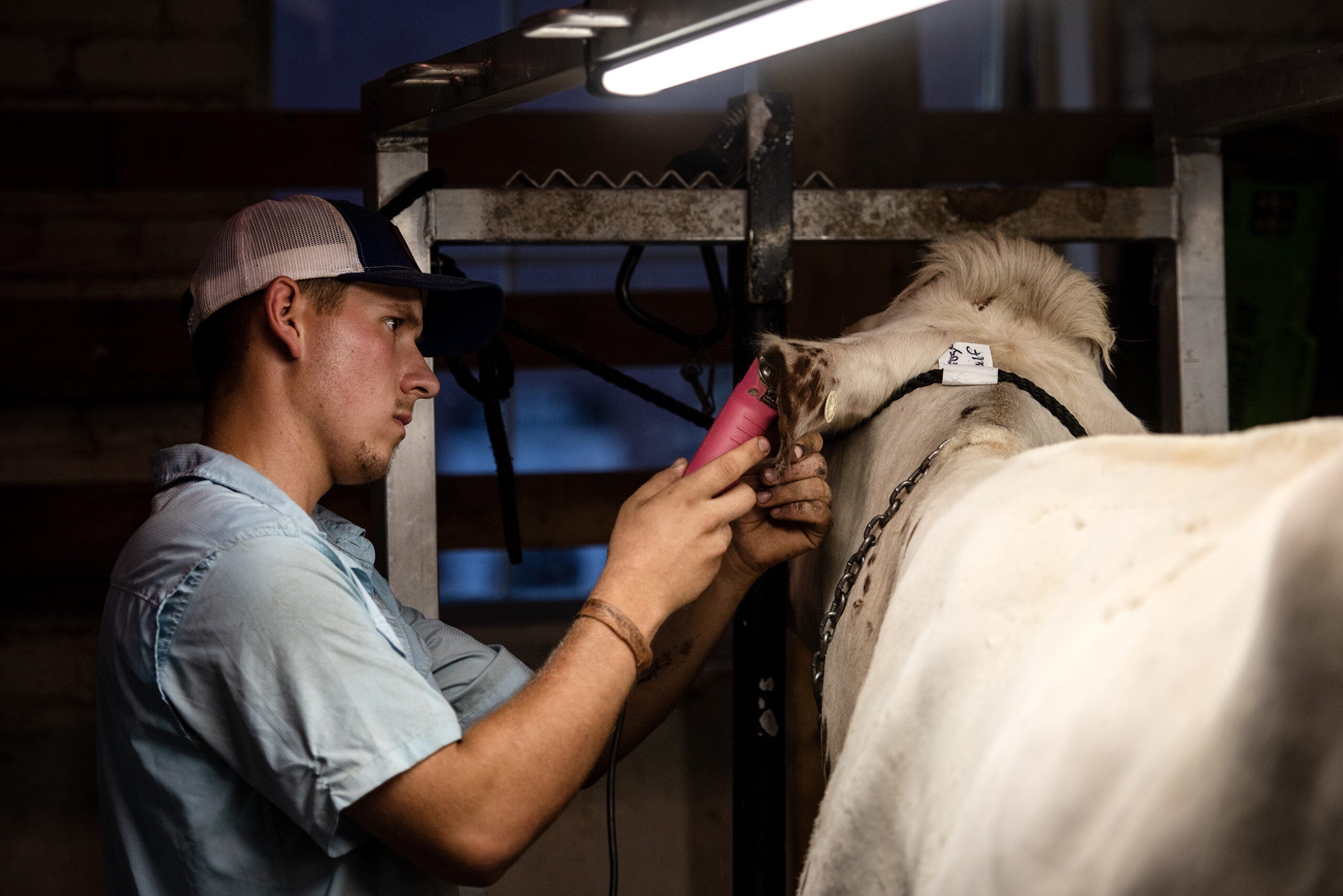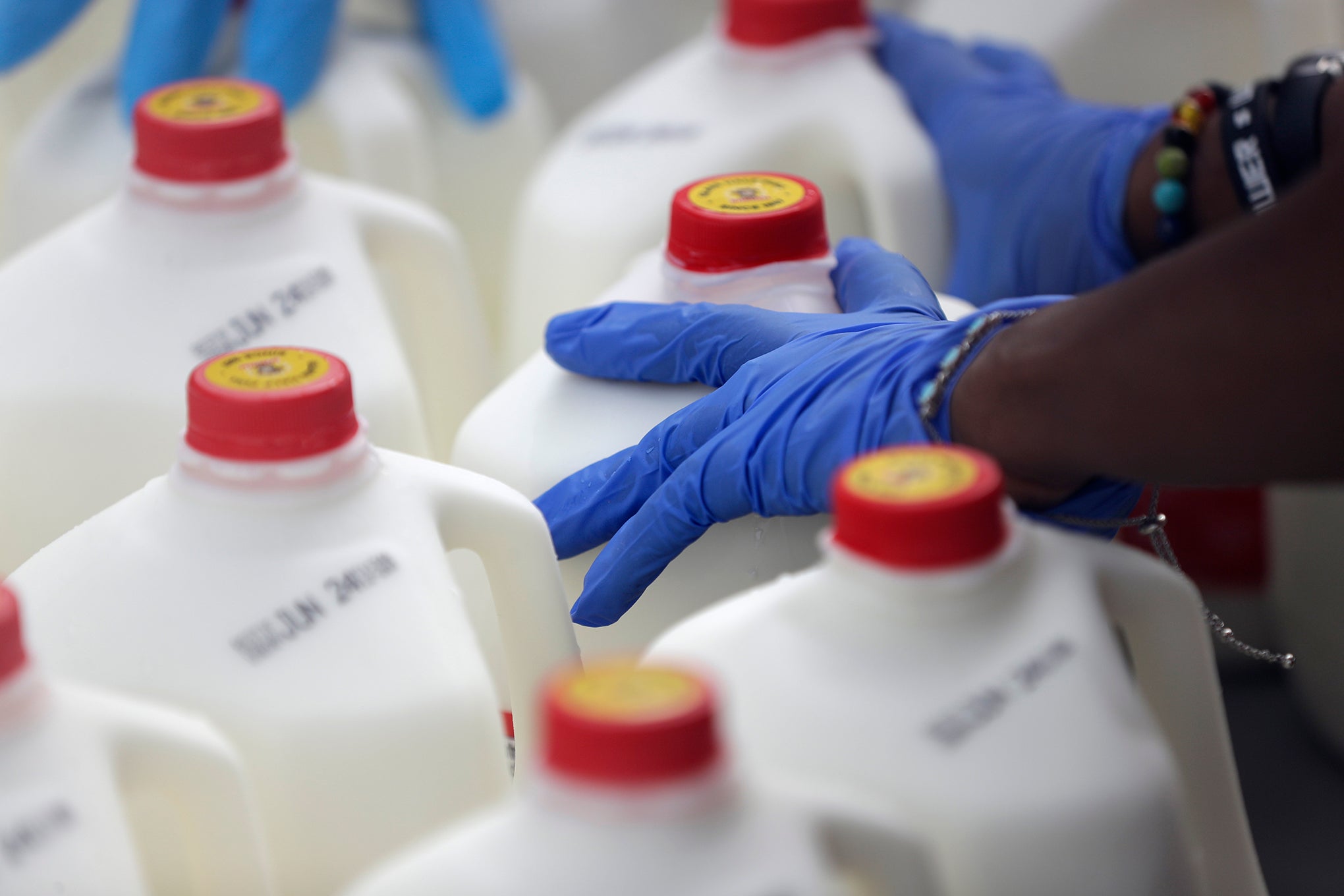Wisconsin officials continue to emphasize on-farm protections against avian flu ahead of a new federal mandate to test more dairy cattle for the virus.
The U.S. Department of Agriculture released a federal order on Wednesday that requires farms to test lactating dairy cows for highly-pathogenic avian influenza before moving them between states. The order also requires that labs report all positive tests to the federal agency.
During a call with reporters, Wisconsin State Veterinarian Darlene Konkle said Wisconsin already requires any positive tests for influenza virus found in livestock to be reported to the state Department of Agriculture, Trade and Consumer Protection.
News with a little more humanity
WPR’s “Wisconsin Today” newsletter keeps you connected to the state you love without feeling overwhelmed. No paywall. No agenda. No corporate filter.
She said cows moving across state lines are already required by state and federal rules to have a certificate indicating they’ve been examined by a veterinarian.
The newly-required tests will be handled by the Wisconsin Veterinary Diagnostic Laboratory or another federally approved lab, Konkle said, adding that USDA will cover the cost. For dairy producers looking to move cows, she said it will likely mean they need to allow more time for planning.
“Contact with their veterinarian is important, to set up testing and give time for negative results to be received,” she said. “We’re getting more information from our lab on what those turnaround times are expected to look like.”
Konkle said at this time, there are no additional requirements for moving cattle within the state.
Wisconsin has not had a confirmed case of avian flu in dairy cattle. The virus first affected livestock on farms in Kansas and Texas in late March. It’s now been confirmed in dairy cows on 33 farms in eight states.
In the federal order released Wednesday, the USDA said they found highly pathogenic avian influenza, or HPAI, in a lung tissue sample from an asymptomatic cow. Officials said the cow originated from an affected herd and was culled, but did not enter the food supply.
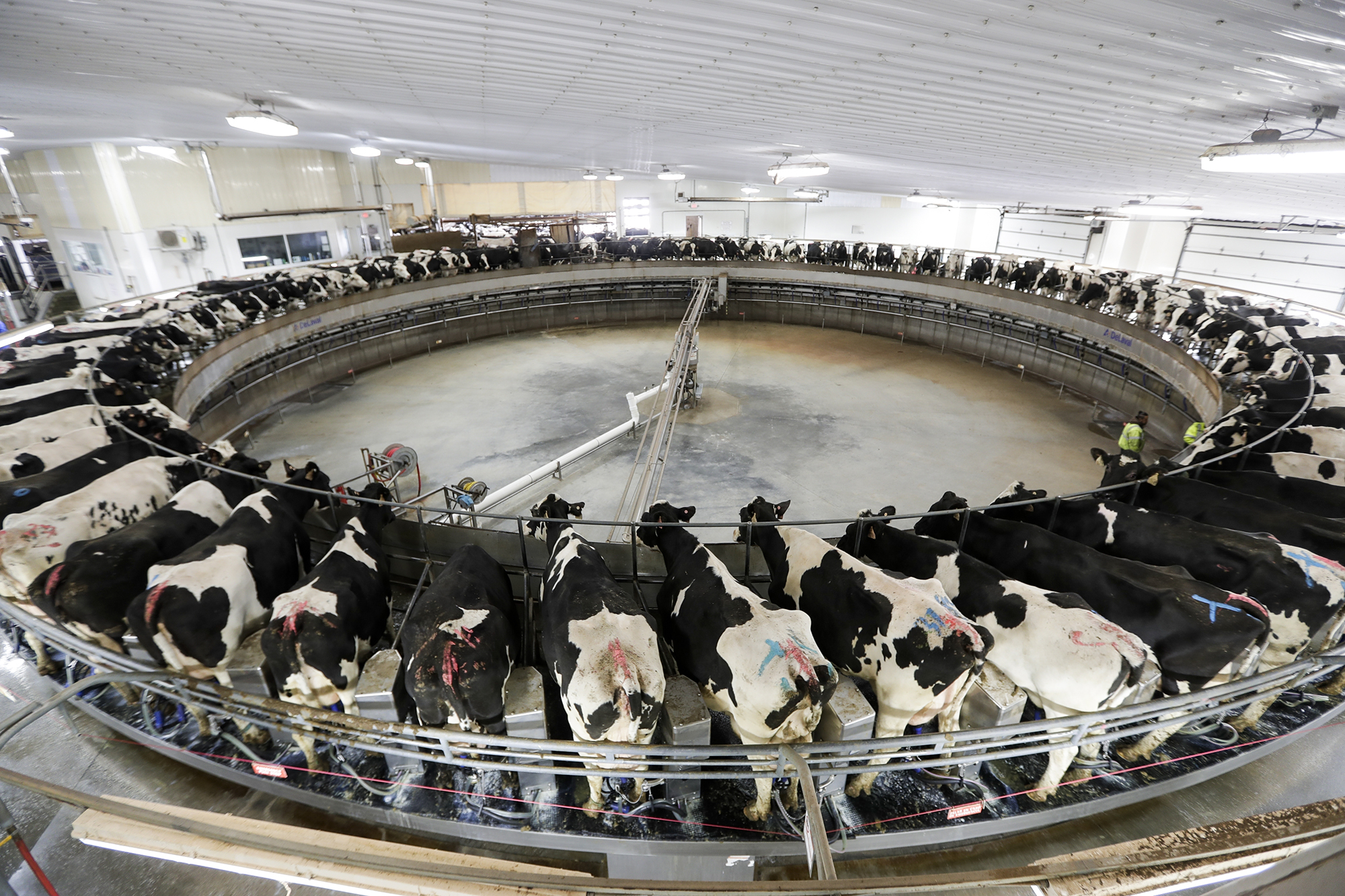
Amid questions around virus transmission, officials say biosecurity measures can reduce risk
Konkle said the new federal guidance only applies to lactating cows because they appear to be at highest risk of spreading the virus to other livestock.
“We know cattle do concentrate the virus in their mammary glands, so that’s where we’re looking at gathering the most information,” she said.
She said there has been an instance of suspected spread from a dairy herd to a poultry flock. The USDA confirmed in the federal order on Wednesday that eight poultry farms in five states, including Minnesota, have been infected with the same HPAI virus genotype that’s been detected in dairy cattle.
Federal officials have confirmed that the virus can spread from cow to cow, but said it’s unclear exactly how the virus is being spread. But they noted “the virus is shed in milk at high concentrations.”
“Anything that comes in contact with unpasteurized milk, spilled milk, etc. may spread the virus,” USDA officials said in a fact sheet released Wednesday. The fact sheet added that other sampling has indicated that respiratory transmission is not a primary means of spread.
Konkle said strong biosecurity measures continue to be the best way to protect dairy and poultry farms from the virus. Recommendations include minimizing access of wild birds to cattle and quarantining new animals for a minimum of 21 days.
“Certainly, it might look different from farm to farm,” she said. “There’s not necessarily a one-size-fits-all approach to biosecurity.”
Officials say pasteurized dairy products are still believed to be safe
Federal and state officials continue to say they believe pasteurized milk and other dairy products are safe because of pasteurization. The Food and Drug Administration said on Tuesday that while no studies of the effects of pasteurization on HPAI viruses in cow’s milk have been completed yet, “considerable scientific literature” supports the belief that pasteurization kills the virus.
Data from previous studies have shown that pasteurization of eggs, which occurs at lower temperatures than milk, has inactivated HPAI. Other studies have shown the process does inactivate similar heat-sensitive viruses in milk.
Federal officials have acknowledged that pasteurization does not remove the presence of viral particles in milk.
NPR reported on Wednesday that the National Institute of Allergy and Infectious Diseases director Jeanne Marrazzo said tests conducted on retail milk showed that there was genetic material from the virus. Efforts to grow the virus from those samples indicated that the virus was not infectious or “alive,” Marrazzo said, adding that testing was only conducted on a small set of samples.
Dr. Andrew Bowman, an associate professor in the College of Veterinary Medicine at The Ohio State University, told industry publication Bovine Veterinarian that his team has also found traces of the virus in retail milk.
The publication reported that out of 150 samples from six states, the team found 58 tested positive for influenza genetic material but none had viable virus. Bowman told the publication he believes the prevalence shows “it’s a larger problem” among dairy farms than testing has shown so far.
But Adam Brock, administrator of DATCP’s Division of Food and Recreational Safety, said during a call with reporters that he doesn’t think these samples indicate the virus is being underreported. He said the prevalence will likely depend on where the samples are being taken from.
“If we look for it in states that have had infections, we might find it,” he said.
Konkle said state officials expect to receive more guidance on how to apply the new federal order on Thursday. She said her agency continues to work with federal agencies and other states to communicate emerging information.
“We’re looking at the data we can gather as this situation continues to evolve, and trying to keep each other informed of that as best we can,” she said. “As we learn more on a scientific level, we’ll evaluate our requirements and then determine if we need to put additional measures in place.”
Wisconsin Public Radio, © Copyright 2026, Board of Regents of the University of Wisconsin System and Wisconsin Educational Communications Board.


